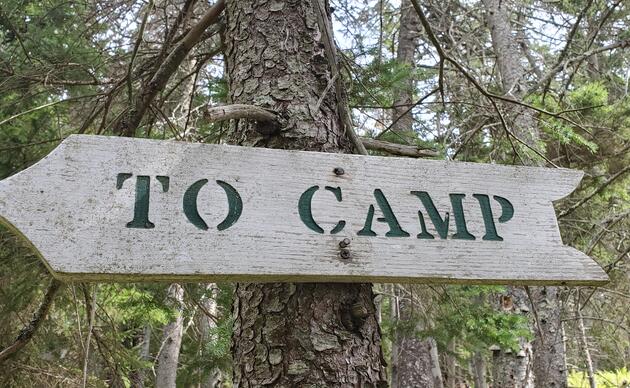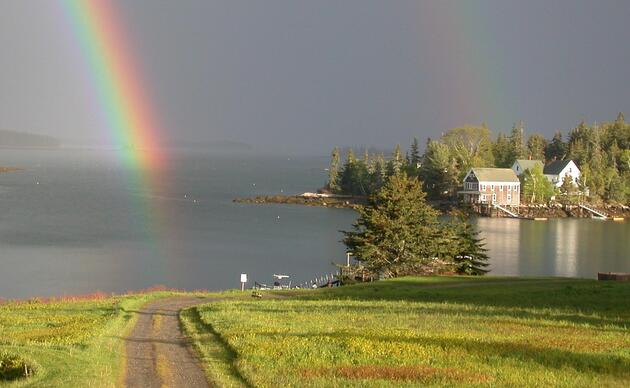Hog Island Happenings - Vol. 02 - August 30, 2023
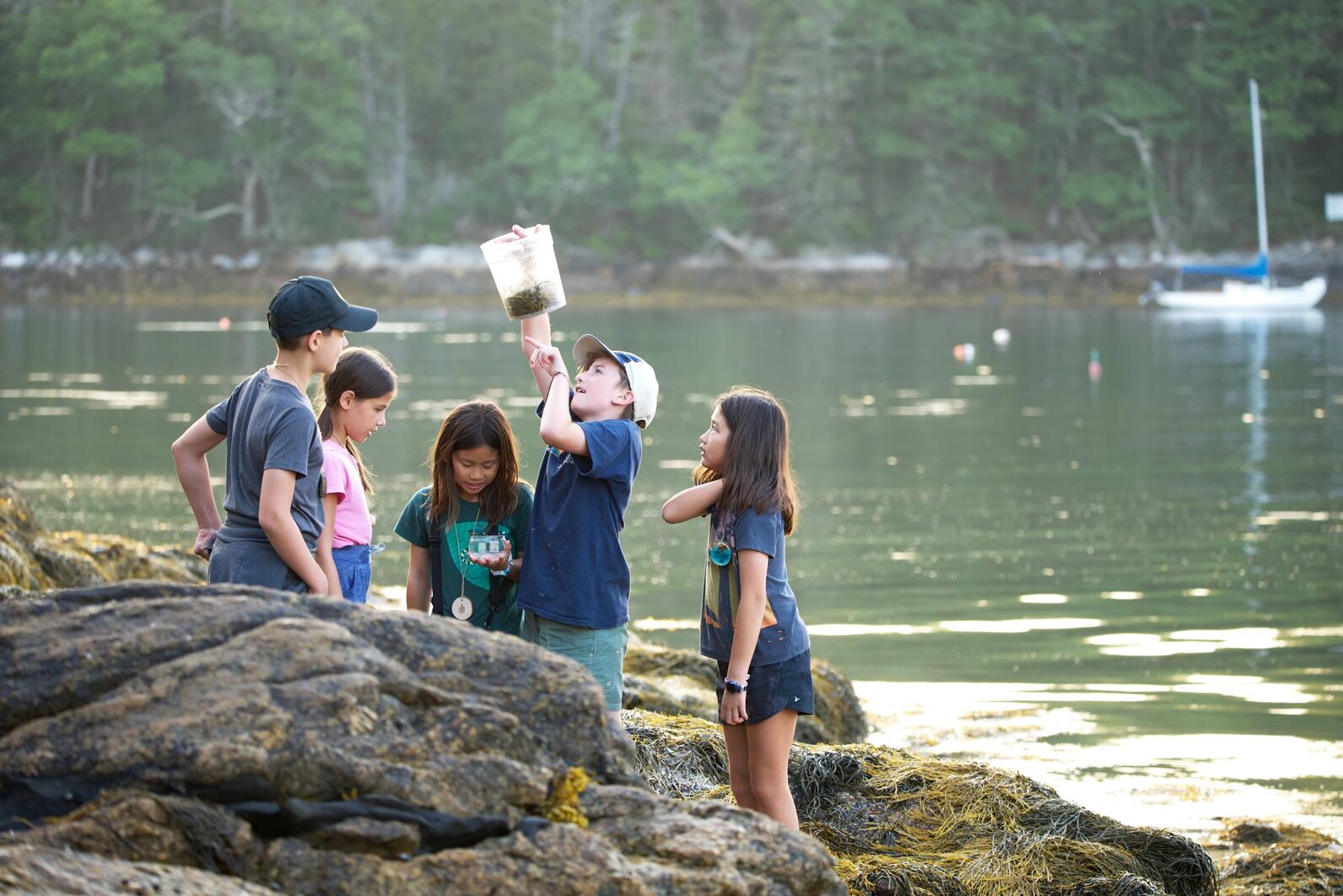
Programming
It’s midsummer in coastal Maine and there has been lots of learning, fun, and friendships happening at Hog Island Audubon Camp. With many birds busy nesting (although there was no shortage of Atlantic Puffins and other seabirds), our camps turned a focus on marine life, art in nature, and ecology of our coastal forest and marsh habitats.
Campers of all ages during Family Camp explored watercolor painting and cyanotype printing with artist Katama Murray, learned about marsh and coastal wetlands with experts Heather Richards and Kirk Raper, practiced nature journaling with educators Lindsay Strout and Margaret Atwood, and much more. We also played a lots of awesome games like “Captain’s Coming” and “Pies” with game master Rosy Tucker. Once the sun set, campers gathered in the fish house for songs from the infamous Hog Island Family Camp Band, this year crowned “The Beetles” and “Van Heron” by each respective family camp session. Everyone enjoyed lively times full of music, singing, laughter, and more laughter!
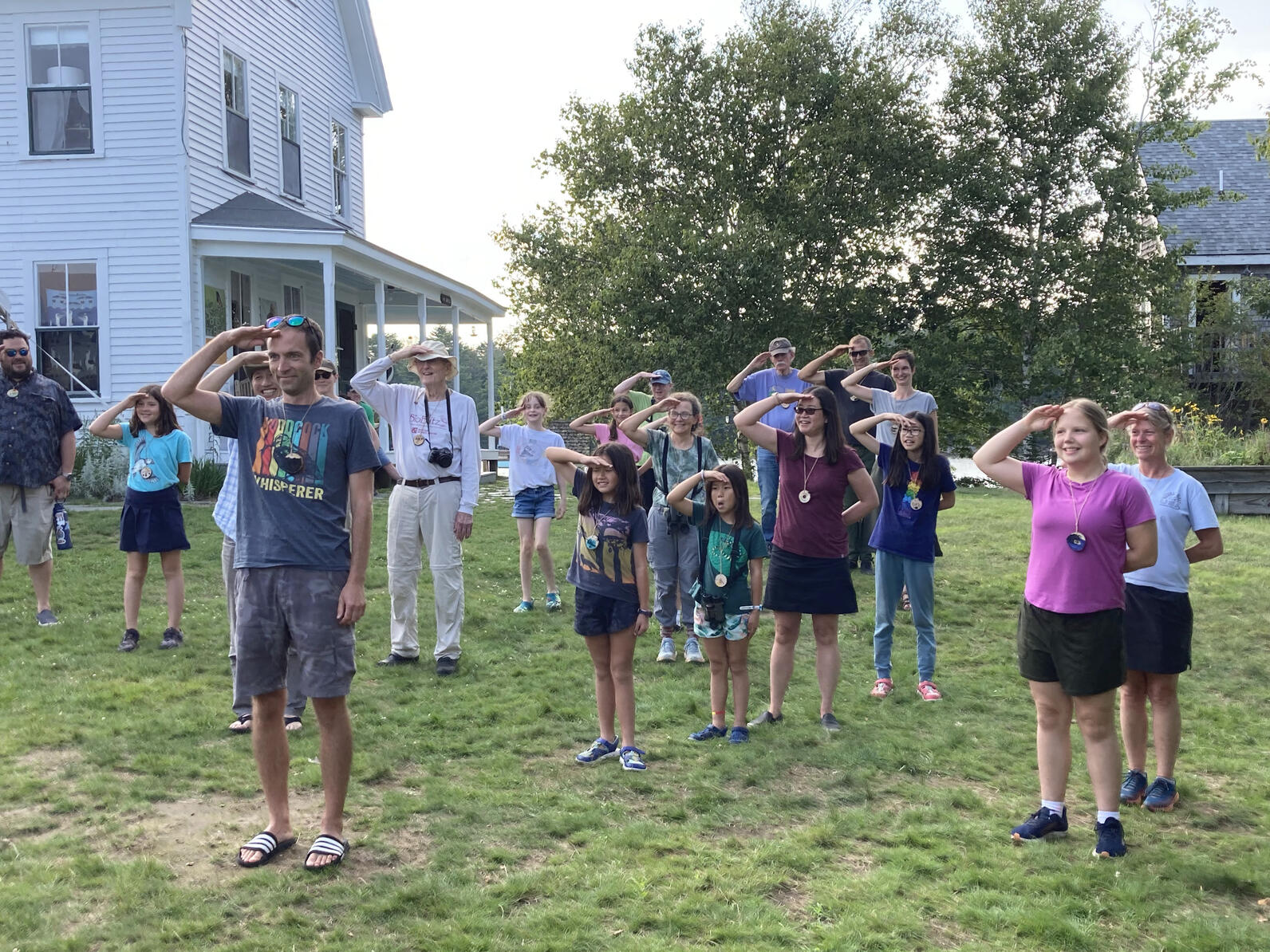
Throughout Educator’s Week, educators from across the country engaged in experiential learning with their instructors and peers and developed new skill sets in outdoor education to share with the world. We explored things like nature journaling, ocean life, birding, pond study, and the importance of slowing down to appreciate nature. Campers enjoyed forest bathing in Hog Island’s moss-covered spruce stands, and everyone let out gasps of surprise and awe when looking close-up at things through a magnifying loupe eyeglass. During the evenings, educators enjoyed presentations from instructors. They learned about Breathwork for Kids with Kayla Carrington and participated in an essential discussion about JEDI (justice, equity, diversity, and inclusion) topics in education.
These sessions at Hog Island wouldn’t be the same without amazing, passionate instructors, outstanding food from our kitchen staff, and our hardworking FOHI (Friends of Hog Island) volunteers. We are so lucky to have wonderful people, nature, and a special place to experience life-changing weeks at camp.
Moments in Nature
July and August have brought a lot of rain and fog to our island refuge in Muscongus Bay. But campers and instructors alike embraced the weather! Rainy hikes highlight the smell of moss in the forest, heavy fog creates a magical effect by erasing the mainland from view, and most excitingly for many, waves of colorful mushrooms sprung up throughout the island.
With warmer ocean waters during midsummer, many campers turned a special focus on our fascinating marine life. Thanks to the help of family camp kids, our touch tank was brimming with crabs, snails, fish, and seaweed. Dozens of campers throughout Family Camp and Educator’s Week waded into chilly water to seine for fish. The large, sometimes cumbersome net created a lot of excitement and laughter for those who waded into the cold. Upon opening the net onshore, campers found small schools of silverside fish, green crabs, winter flounder, and prawn.
And the marine excitement didn’t stop after our camp-wide intertidal exploration sessions; each week also featured a designated night of activities, one of which included looking at bioluminescence (tiny plankton that glow blueish green when touched) off the dock. Campers during Educator’s Week were lucky enough to watch another spectacle off the dock: schools of longfin squid! These small squid swam through the water with ease, drawn to the dock to eat plankton that were attracted by the dock light. One night, we even watched harbor seals chasing the squid, causing splashes in the water and shouts of excitement from shore.
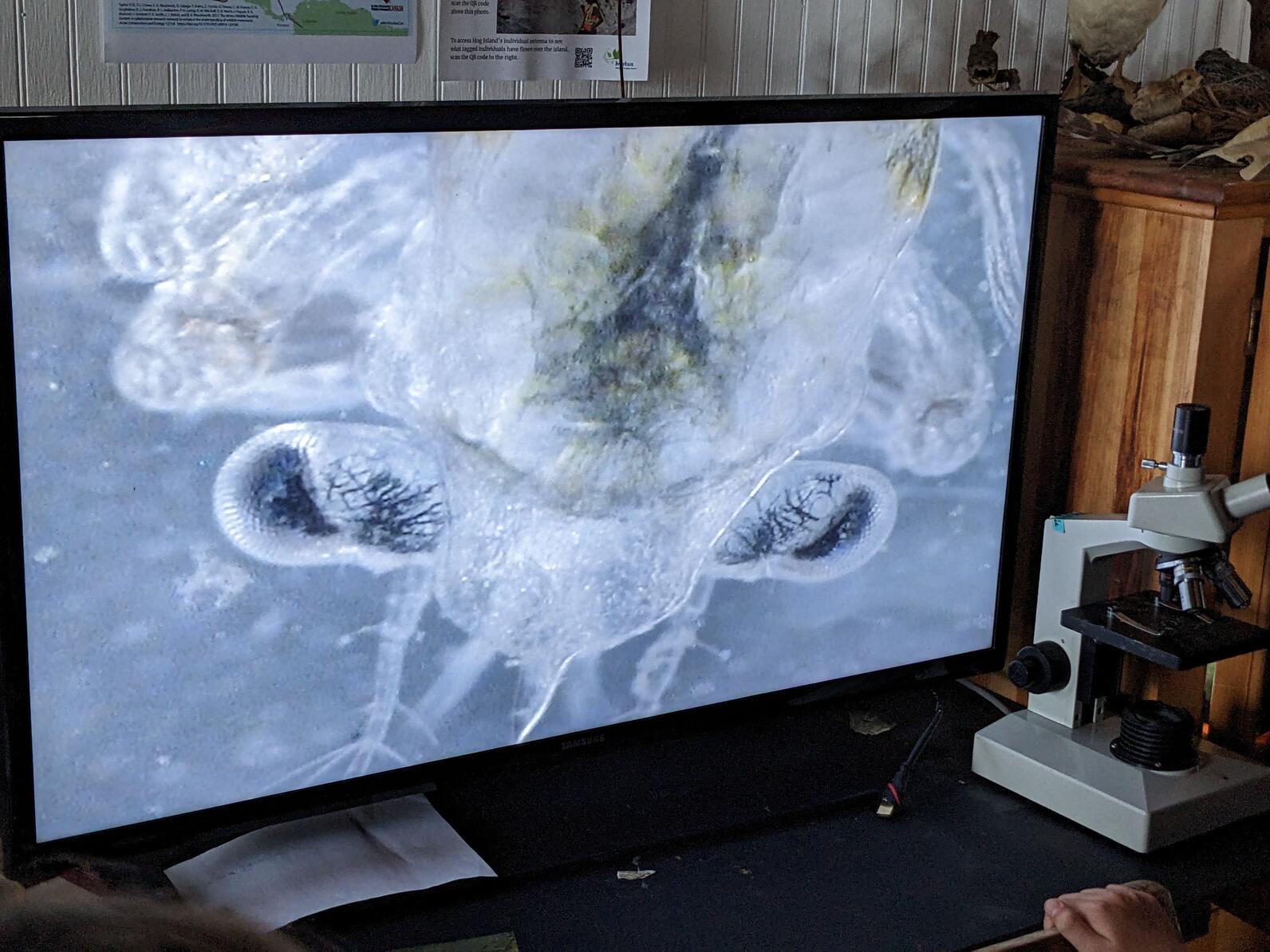
Meanwhile, in the Queen Mary Lab, campers explored the world of plankton and tiny dock-dwelling creatures under our microscope. In just one afternoon we found dozens of skeleton shrimp, tiny amphipods, sea squirts and sea vases, tunicates, and marine worms including a beautiful 12-scaled worm and a flatworm. But the all-time favorite sighting of Family Camp 2 was the ‘teeny tiny tunicate worms’ discovered parasitizing a tunicate under the microscope. These tiny worms even got a song and dance written about them, performed by campers during Thursday evening festivities.
With mushrooms, marine critters, moths, and of course, birds, these past few months were filled with amazing sightings in nature. We are so thankful on Hog Island to have ecosystems which support such fascinating creatures and we hope to inspire campers to take their curiosity home with them to explore nature in their own home spaces.
Explore.org
In a tragic turn of events, the Boat House Nest’s lone osprey chick, Skipper, was predated last month. In the early morning hours of July 24th, a Great Horned Owl swooped into the Boat House nest and flew off with Skipper after a short struggle. This was an especially devastating loss for longtime osprey cam viewers who’ve seen their fair share of predation over the years on the Hog Island Nest.
Viewers took to the chat to express their grief and to support one another after the loss of Skipper, who was heartbreakingly close to fledging. The day prior to the attack, Skipper had attempted liftoff, flapping his wings earnestly and tottering around the nest cup. This activity was likely what gave Skipper away to the Great Horned Owl, a nocturnal predator whose sharp eyes and excellent hearing allow it to hunt with deadly precision.
The osprey nests here in the Muscongus Bay are close to the treeline, making them prime targets for the boreal Great Horned Owl. Concerns have been raised about the location of these nest sites but it’s worth noting that last year Dory and Skiff managed to raise three successful fledglings on the Boat House Nest without predation. Hopes were high that this year would see a repeat of their success with nestling Skipper. Though it isn’t so, it was still a joy to see Skipper’s growth.
And there’s always next year for our ospreys on the Boat House to try again!
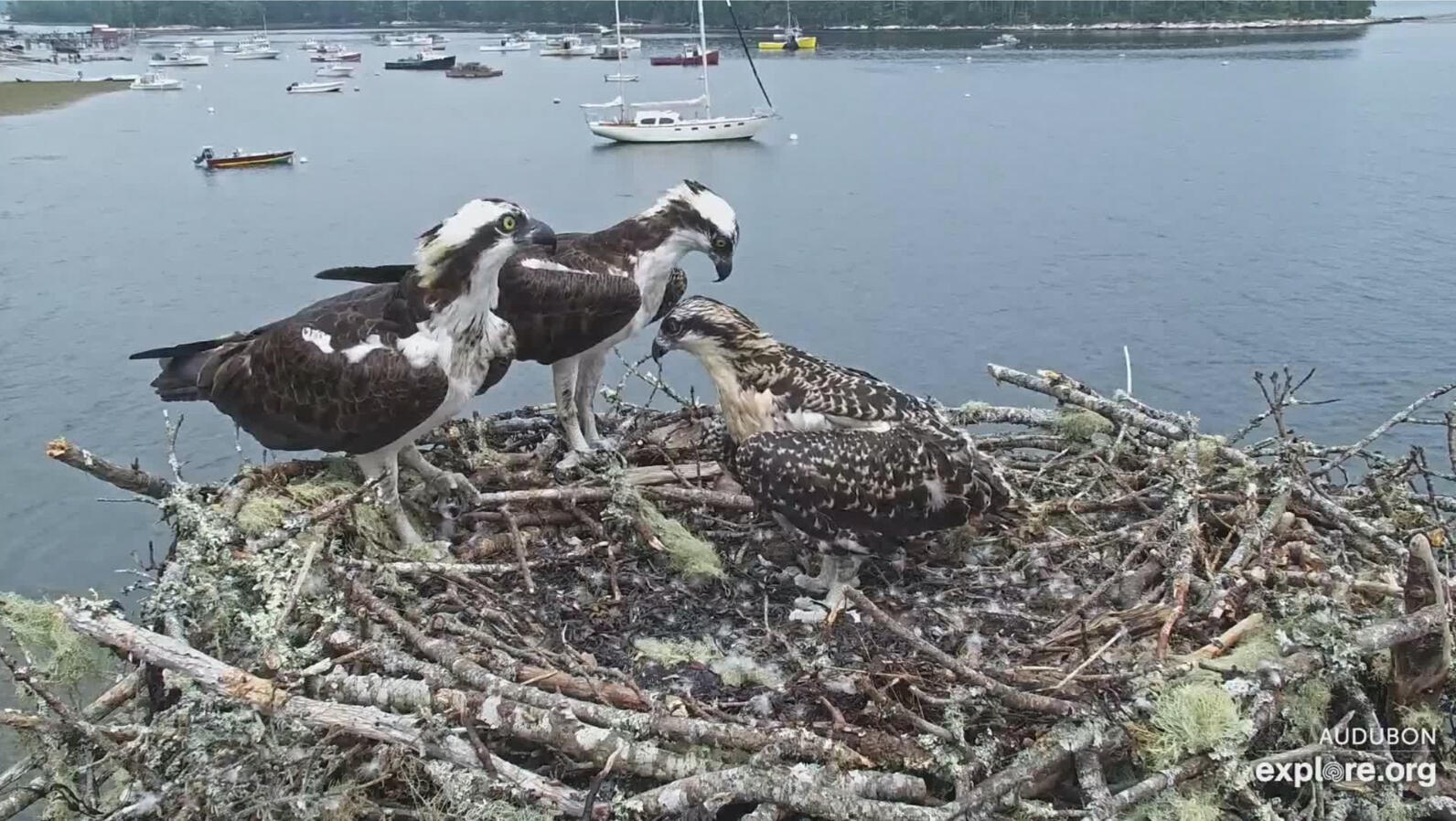
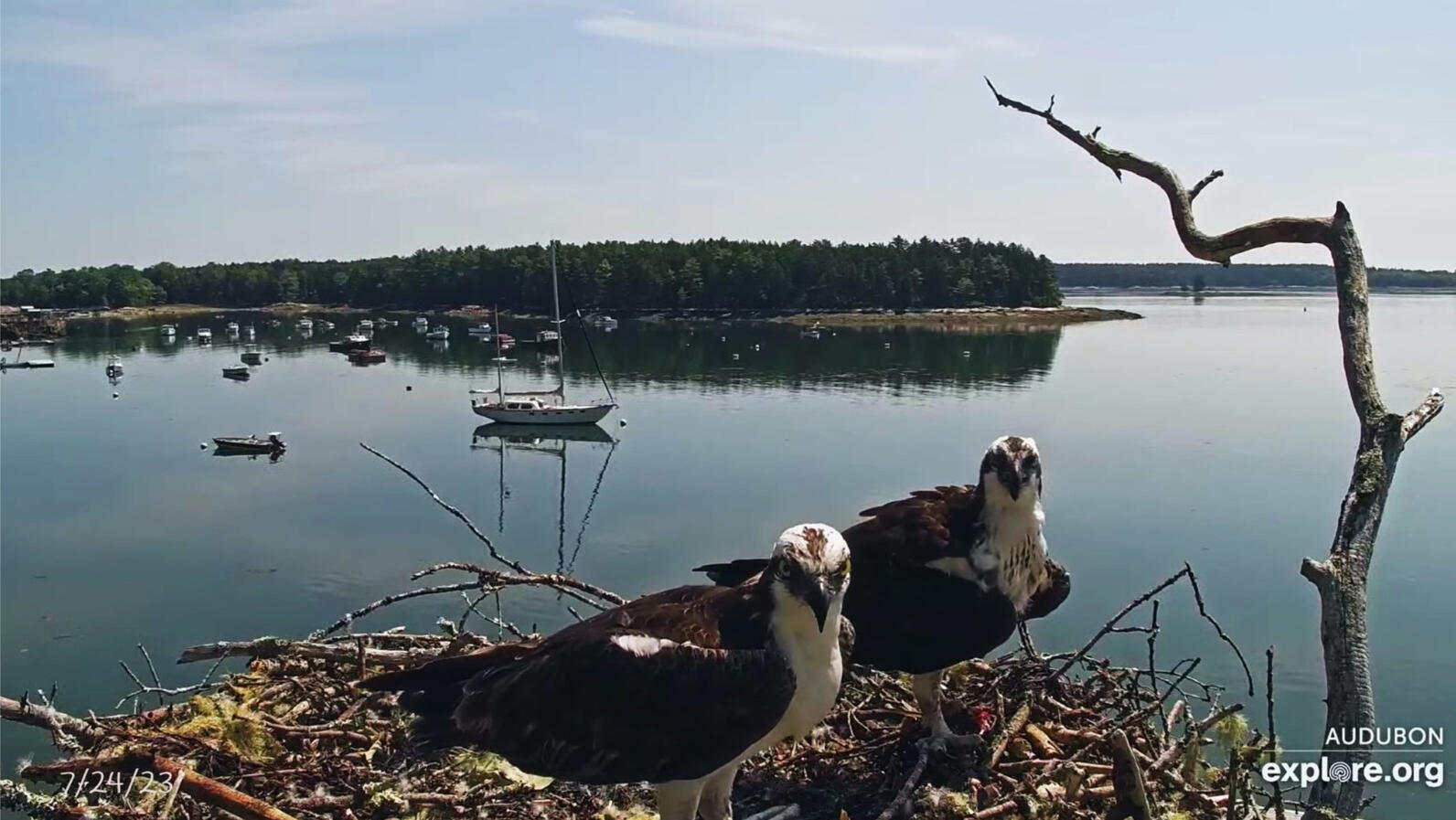
The Hog Island Nest, once home to Steve and Rachel, has now turned into a terrarium of sorts. Having been abandoned for the season, the Hog Island nest is now a fertile little farm among the trees! Spot chickweed, grasses, and what appears to be a type of legume in the nest cup. It remains to be seen whether or not next year will prove fruitful for osprey chicks but for now the nest is certainly fruitful for verdant foliage!
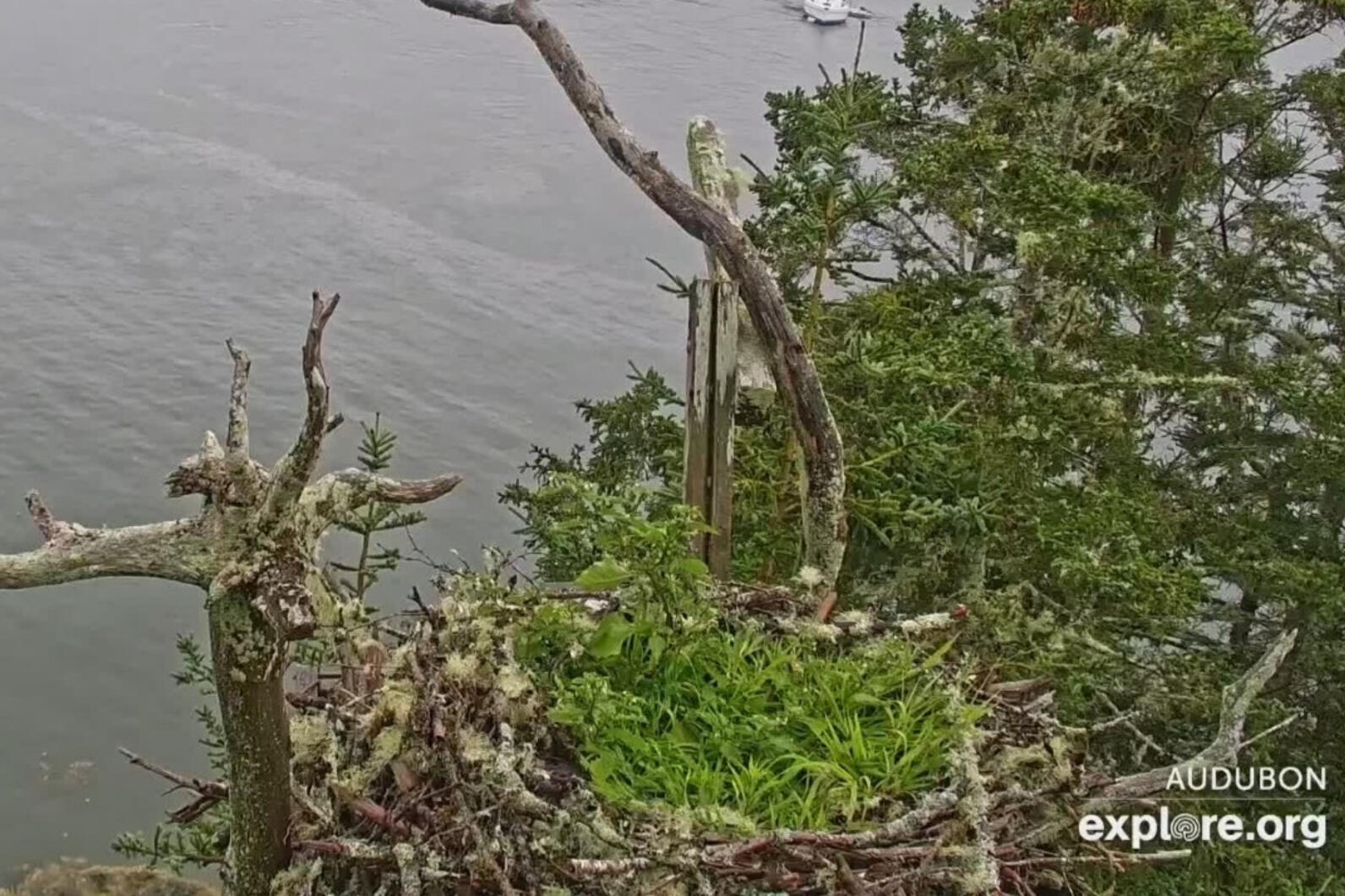
Protecting birds and the places they need is an interdisciplinary calling that goes far beyond Hog Island's shore, even with the 9ft average tidal range. Here in Muscongus Bay, the Seabird Institute has partnered with Colby College to shine a light on how migrating species use this place of good fishing. In early June, Hog Island Facilities Manager Eric Snyder and the New England Motus coordinator Todd Alleger worked together on Allen Island to install one of the newest towers in the Motus network, a collaborative international research network that uses a system of coordinated automated radio telemetry to track birds, bats, or insects by locating tiny transmitters attached to them. More details on this collaboration can be found on the Colby College article, "Understanding Bird Migration."
Closer to camp, the facilities team has been taking advantage of the summer weather for groundskeeping after the month of rain. Each day brings its own adventures with the 100-year-old buildings from maintaining old plumbing systems to addressing sticky windows and dealing with squirrels who constantly challenge us on who truly rules this shared space!
Friends of Hog Island
Our dedicated volunteers continue to work hard supporting the camp. Over the last several weeks the desperados (a great group of local volunteers) have consistently answered the call when extra help was needed. It seems there is no job too big or too small for the volunteers and all tasks are performed with a smile. It is a joy to work with a group of folks with so much love for Hog Island.
Staff Highlight
Name: Lindsy Buckland
Role at Hog Island: Office Coordinator & Hog Island Registrar
Favorite part of your job: My role at the Seabird Institute is multifaceted. When it comes to registration, my favorite part is talking to campers after they have been immersed in a session for a few days. I enjoy hearing about the life-changing experiences and new friendships that are being made throughout the week. These conversations give me an energized feeling and a renewed sense of determination in the role. When it comes to being an administrator, I would say that my favorite part is reading the participant reviews and having collaborative and continuous improvement discussions with staff and instructors alike. This process is an asset to the team that allows us to hear all perspectives and to grow from camper involvement. I’m especially proud of the work that we do to make Hog Island an equitable and diverse place. Our willingness to talk through these kinds of challenges in hopes of making the program more accessible is a huge part of our success.
Favorite bird: The Atlantic Puffin
Describe your first memory of being on the island: My first trip to Hog Island was during my orientation period. I was amazed by the carbon-neutral infrastructure in place. Eric gave a deeply informative backstory on the island’s resonant history. The amount of work that our staff and the Friends of Hog Island team have poured into keeping the island beautiful and environmentally friendly is a delicate balance and a wonder. The camp was not in session due to COVID, but I began to see the island’s full potential even then.
Favorite Hog Island meal: Anything with our kitchen’s homemade Peanut Sauce on it!
How do folks get in touch with you? Please feel free to share your experiences with us via email: hogisland@audubon.org. Should you need help with registration, scholarship sponsorship, or payment processing, I am available by phone as well: (207) 360-7733 Ext. 103. I look forward to hearing from you!



